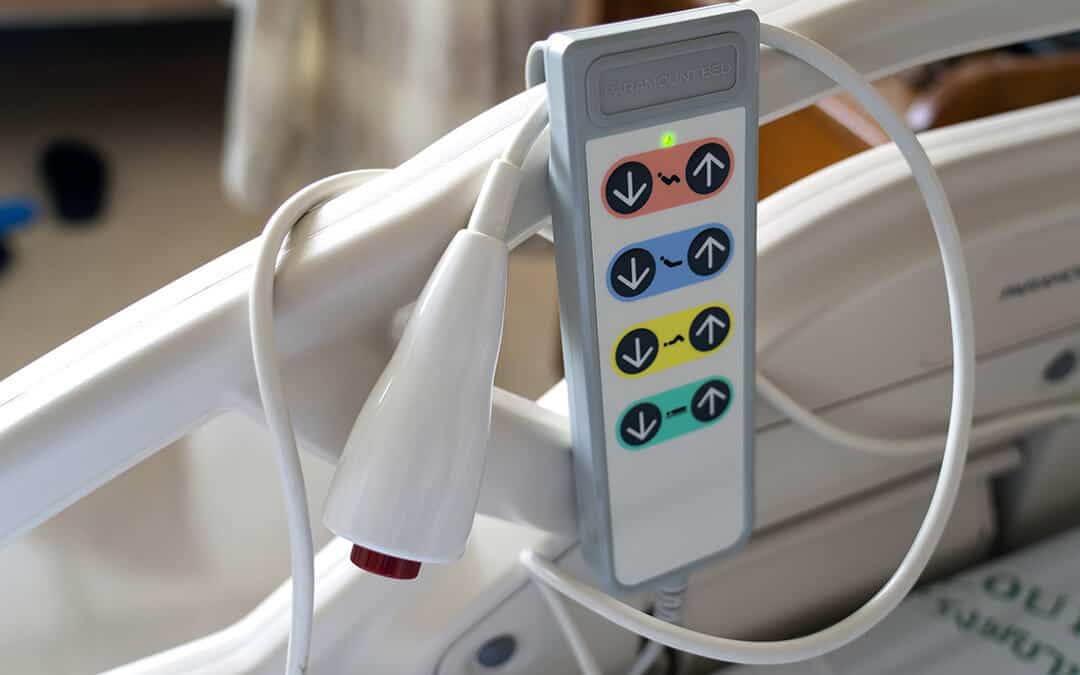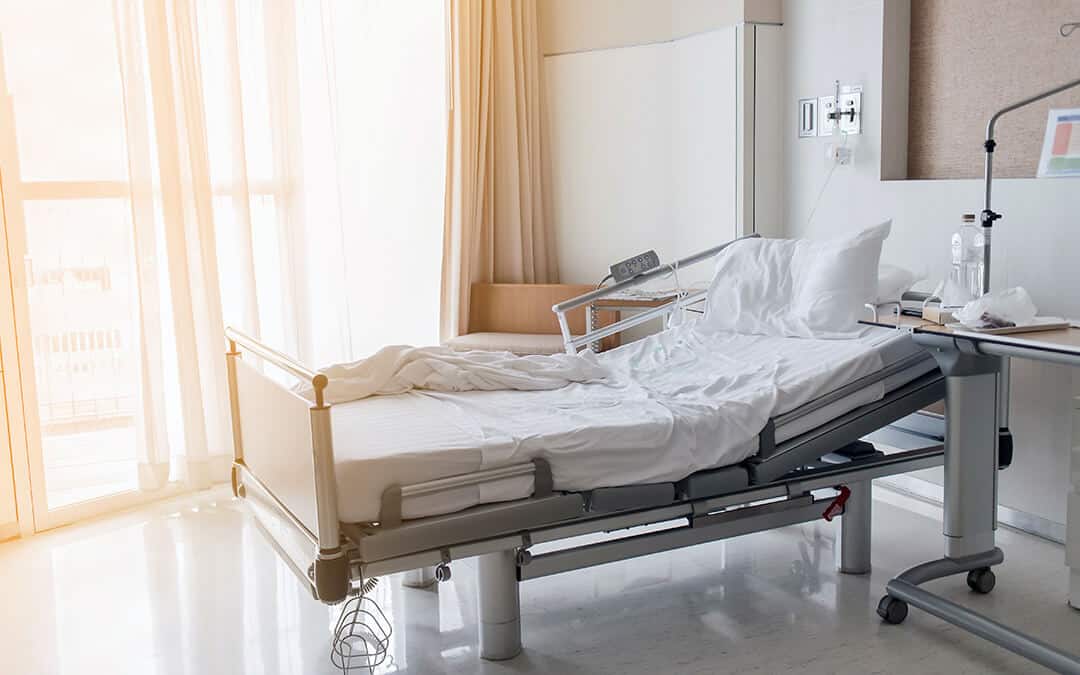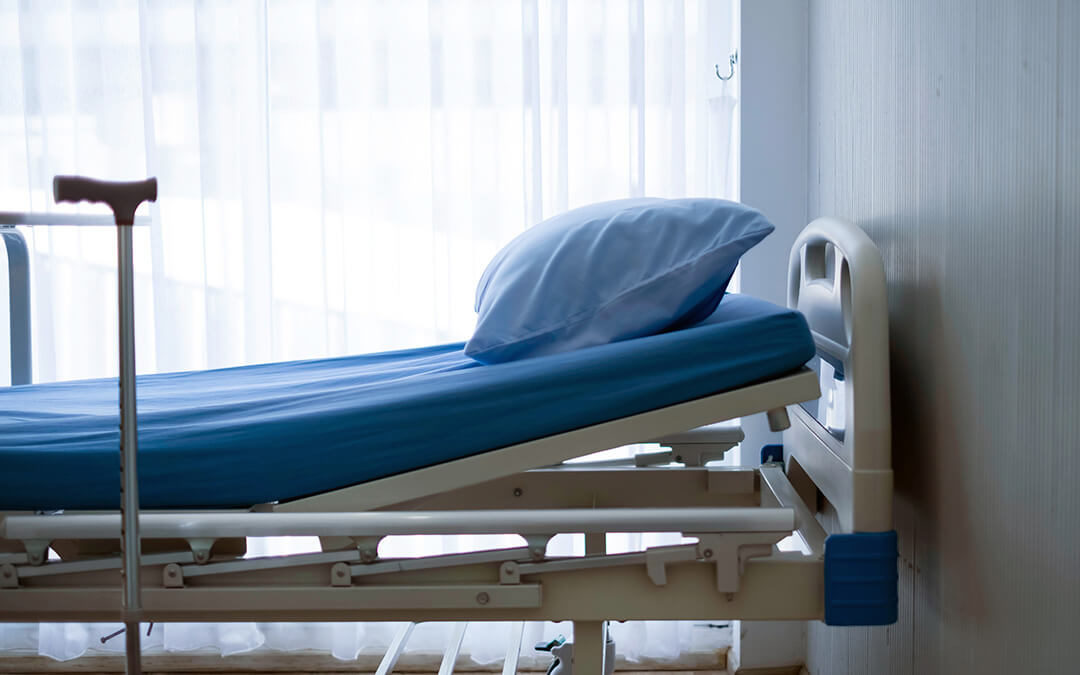While recovering from an illness or injury, or when receiving long-term medical care at home, a hospital bed is a versatile alternative to a standard bed. Most hospital beds are designed with some degree of mattress-positioning adjustability, along with supportive, protective side rails that can be raised or lowered, depending on patient or caregiver needs.
Hospital beds allow patients to sit up, and also to elevate specific areas of the body, for therapeutic and other purposes. The discomfort of leg swelling, for example, can be alleviated by elevating the legs in bed.
Bed height adjustability is a helpful feature for patients affected by mobility or balance issues, who may have difficulty getting in and out of bed. Raising and lowering a hospital bed can also make it easier to transfer a patient from the bed to a wheelchair or walker.
Patient mobility and the amount of time spent in bed are important considerations when selecting a mattress for a hospital bed. Many hospital bed mattresses are designed to reduce pressure on specific areas of the body, to help prevent bed sores. Foam, air, gel, and other mattress types are available for hospital beds, each with unique benefits.

Hospital beds can be rented or purchased, wheeled or stationary, and are available in a variety of styles. Let’s look at the most common types of hospital beds on the market today.
Manual Beds
Manual hospital beds are adjusted to different positions using a hand crank that’s built into the foot or head of the bed. The hand crank is used to raise or lower the mattress, so that either the upper half or the lower half of the patient’s body is elevated, as needed.
Manual beds have no electric adjustment capabilities, nor do they offer bed height adjustment. Manual bed adjustment options are more limited than what can be found with electric beds. Their simplicity, however, may be a benefit for patients not needing the bells and whistles of electric beds. If basic head (or foot) elevation is the only desired adjustment, a manual bed can be suitable for patient use at home. Manual beds are also less expensive than beds that come with electric capabilities.
Semi-Electric Beds
Semi-electric beds offer both manual and electric adjustment capabilities. A hand crank is used to manually raise or lower the height of the bed, while the head and foot areas are raised or lowered electrically. Bed height adjustment is helpful for caregivers who might otherwise strain their backs while assisting patients in bed. Corded electric controls make it easier for patients to reposition themselves, at the push of a button, in bed.

The semi-electric bed is a good option for patients who need the ability to raise and lower the bed, without the higher cost of a fully electric bed.
Full Electric Beds
Most modern medical facilities offer beds with full electrical adjustment features. On fully electric beds, motorized position and height adjustments are made with push-button controls. For patients (and caregivers) without the physical strength to operate the hand crank on a manual or semi-electric bed, the full electric bed provides an ideal solution for home use.
Corded touch control delivers a range of height and position adjustments, through easy, push-button commands. When frequent adjustments are needed through the day, full electric beds give patients more positioning options, with greater convenience than offered by manual or semi-electric beds. Some full electric beds have built-in scales, so that patient weights can be measured while the patient is in bed.
Patients who spend more than half the day in bed – or who are receiving long-term home care – tend to benefit the most from full electric beds. Manual and semi-electric beds are better for short-term use, as their adjustment options aren’t as advanced as those found on full electric beds.
Low Beds
Designed to prevent falls, and for those who may experience difficulty climbing into and out of bed, low hospital beds provide a wide range of heights, and can be lowered almost to floor level. Low beds can be manual or electric.
Safety Beds
Similar to cribs, safety beds feature high sides or railings, to prevent children from falling or climbing out of bed. Children in recovery, or in need of ongoing medical care, are kept safe by the protective barriers on safety beds.
Bariatric Beds
Featuring extra-wide frames, bariatric beds are built for heavy-duty use, to support a patient weighing up to 1200 pounds. Bariatric beds are larger and stronger than standard hospital beds, manual or electric, to provide positioning support to patients of compromised mobility.
Trendelenburg Beds
Full electric Trendelenburg Position beds offer more positioning adjustment and functionality options than any other hospital bed. They’re designed to facilitate medical procedures performed at odd angles, and to support the body in almost any position. Trendelenburg Beds are seldom needed for home use, but they represent the highest end of hospital beds.
Our health services division works directly with patients and their medical providers, delivering ventilation, mobility, and patient-care supplies. Contact CalOx to help understand which type of hospital bed is best for you or your patients.
